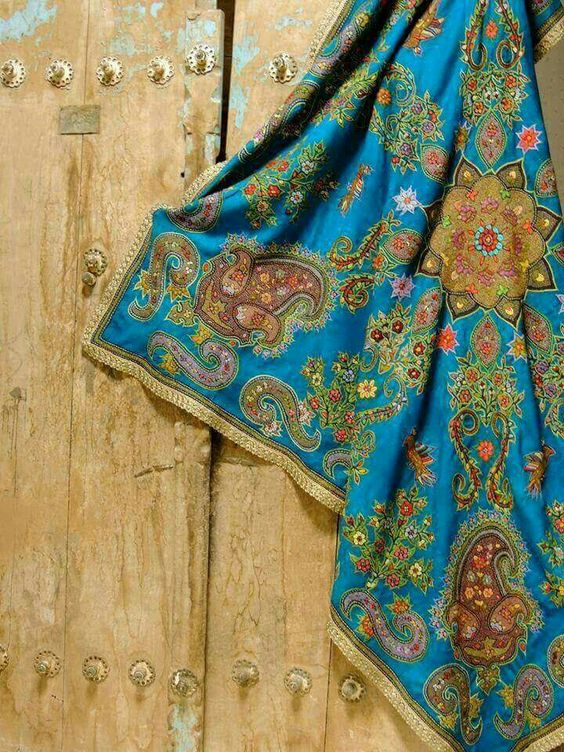 Termeh is the name given to a specialty cloth that originated in Yazd. Traditionally, the cloth was hand-woven using natural silk (Persian, ابریشم abrisham) and wool fibre (Persian, پشم pashm). Termeh can take the form of fabric, sheets, panels and other shapes.
Termeh is the name given to a specialty cloth that originated in Yazd. Traditionally, the cloth was hand-woven using natural silk (Persian, ابریشم abrisham) and wool fibre (Persian, پشم pashm). Termeh can take the form of fabric, sheets, panels and other shapes.
Good quality traditional termehs are part of a family's heirloom in much the same way as are (the related) Kashmiri scarves. They are often an article used in Iranian weddings - such as the sofreh used as a floor spread sheet. In these type of termehs, gold and silver threads may be incorporated either into the weave, as part of an embroidered pattern or as a border.
Both Yazd and neighbouring Kerman regions have the reputation of producing quality termeh. As is the case with Persian carpets, traditional Yazdi, as well as Kermani termeh, have a reputation of being of superior quality and workmanship.
One of the most common design motifs associated with the termeh is the Boteh (also spelt botteh) motif known in the west as the paisley design. The history of the boteh motif, termehs (and indeed Persian carpets as well) and Aryan trade are closely linked.
The design for tablecloths may include a chequered or honey-comb pattern. Other design patterns include stripes, both wide and narrow, the Atabaki pattern, and the Zomorrodi pattern that was predominantly green in colour.
Image patterns popular with Yazdi Zartoshti women who engage in Zartoshti-doozy (Zoroastrian needle-work / embroidery) include the tree of life, the cypress tree, the juniper tree, clove, four or eight petal jujube, peacocks, roosters, hens and chicks, hoopoe, fish and geometric shapes such as circles and squares.